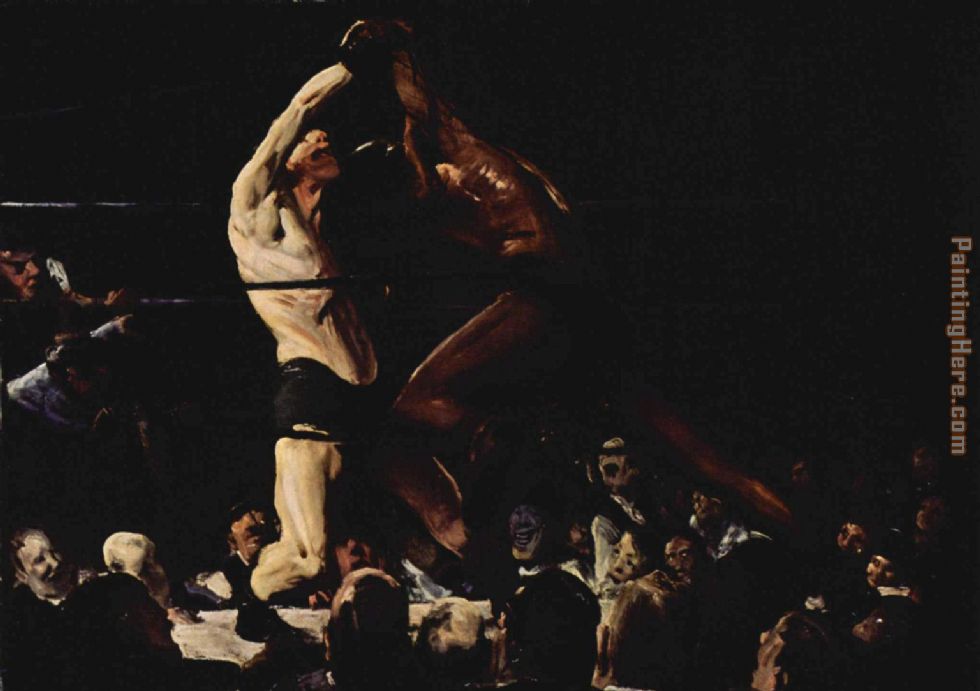Stag at Sharkey's, George Bellows, 1909
Boxing was banned in New York at the time the American Realist painter George Bellows painted the above, which shows an illicit fight taking place at the bar opposite Bellows' studio. I love the sense of movement and dynamism in the painting, as well as the way that the paint on the two fighting figures has that melty effect that Francis Bacon uses in his work - the flesh really seems to be feeling the impact of the blows. It also has a hint of Futurism about it; that same year it was painted Marinetti was writing the Futurist Manifesto in Italy.
The boxing paintings are my favourite of Bellows' canvases hanging at the Royal Academy, and that's not just because I've recently started having weekly boxing lessons myself in an attempt to lose the Esmeralda-weight. (I've taken to asking any female celebrities I interview how pregnancy affected their bodies. Can you believe that Daphne Guinness put on over sixty pounds, and took a year to lose it each time? It makes me feel slightly better, but still . . . However I love my boxing lessons; I love learning something new, and it requires so much concentration, ducking and weaving and remembering sequences, that I almost forget I have children. My vague aim is to get good enough to join a proper boxing gym, such as the All Stars Boxing on the Harrow Road. I picture myself as Hilary Swank in Million Dollar Baby, though obviously my story will have a different end. I want to be strong as well as thin. Strong like a Pussycat Doll.)
Anyway, back to Bellows, and the Royal Academy. What's interesting - at least to me - is that they've got Manet hanging downstairs, so it's American realism v. French realism, and one can see just how much the one owes the other.
A Day in June, George Bellows
Les Jardins Tuileries, Edouard Manet
Although that Manet isn't actually hanging at the Royal Academy at the moment, as that particular exhibition is entirely devoted to portraits.
The Bellows is more general, with several works from each of his 'themes' - aside from boxing, he painted cityscapes, snowscapes, views of the Hudson and East River, the New York docks, family portraits, and a series of brilliant but horrific war scenes, much influenced by Goya. Then there are some drawings: more boxing matches, an evangelical preacher, an execution, and a dance in a mad house. But the boxing ones are the best. Some of the others seem a little frozen, as if his natural energy has been wrongly contained in a too-still life.
Bellows died young, aged 43, from appendicitis. He was considered at the time to be one of America's greatest artists. A quote closes the exhibition:
Try everything that can be done.
Be deliberate. Be spontaneous.
Be thoughtful and painstaking.
Be abandoned and impulsive.
Learn your own possibilities.
George Bellows: Modern American Life is at the Royal Academy from this coming weekend until the 9th June.






